Visits to 23 Temples in Kagawa Prefecture May 13 – 17
May 13 Monday: Stop 88-85
I came to Shikoku in order to continue the 88-temple pilgrimage route (I completed Stage 1 covering 23 temples in the Tokushima Prefecture last December. Please refer to the older posts). I have been advised to begin with the 23 temples in the Kagawa Prefecture i.e. Stops 66 – 88. If time allows, I could go onto the Ehime Prefecture for Stops 40-65 before taking a ferry to Beppu, Kyushu on May 19 or 20.
The local train service here is excellent. I brought a day pass (¥1200) and the train to Nagao took 40 minutes. I got there about 10am and found the bus to Okuoji (Stop 88) where I would begin this pilgrimage trip would come at 11:14am. Hence, I went to Nagaoji (Stop 87) which is only three minutes on foot. The weather was lovely and I stayed there for almost an hour. A pilgrim talked with me though he could manage a few English words. His name is Konish Takao and he offered to take me to Okuoji in his car. Takao is 48 years old and visits temples when he has his day off.
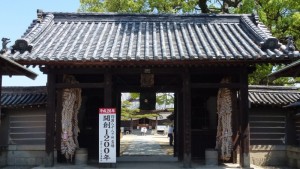 |
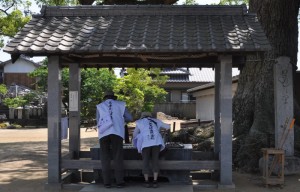 |
 |
Okuoji (Stop 88) located 18km away on a hill top is special: it is the last stop of this pilgrimage route. I met a group of pilgrims who took 41 days to complete the route on foot. I hope to follow Kobo Daishi’s footstep one day if I am still fit. I noticed an 800-m trail goes to Okuni-in (the inner sanctuary) and wanted to make an ascent. Takao was not keen but did not want to leave me alone. He was panting all the way to the top!
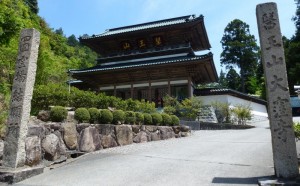 |
 |
 |
 |
I invited Takao for lunch. He insisted on driving me to Shidoji (Stop 86). He was so tired that he dozed off in the garden while I was busy looking at the temple and taking pictures. There are many treasures including impressive wooden structures, paintings, sculptures and a Japanese garden (but it was closed).
 |
 |
My final stop was Yakuriji (Stop 85) which is 8km away. Takao dropped me off at the ropeway station and urged me to take a ride. The uphill walk would take 30 minutes. I paid ¥550 for a one-way ticket. The temple is below the Five-finger Mountain with a colourful main hall and an orange pagoda. A large group of pilgrims arrived and prayed in front of the Daishi Hall. Atmospheric!
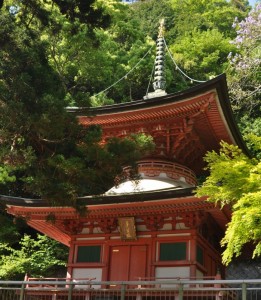 |
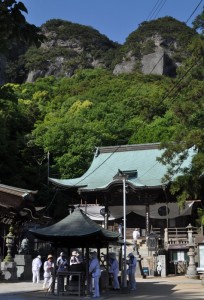 |
 |
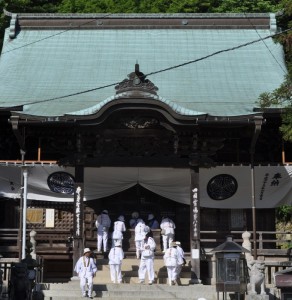 |
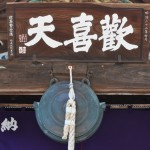 |
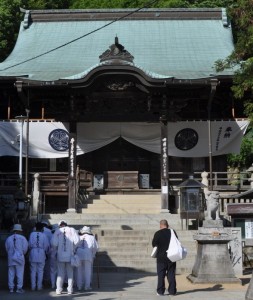 |
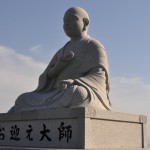 |
 |
 |
It was 4:30pm when I left the temple. It took me some 40 minutes to reach the Yakuri station. I had an excellent udon with seaweed ¥600 in a local restaurant in Takamatsu. What a great day!
May 14 Tuesday: Stop 84-83
I began to experience the frustration in doing the trip with public transport. I purchased a one-day railway pass (¥1200). To reach Yashimaji (Stop 84), I had to take the Shido Line and walked 2-km uphill. The train journey began at 7:56am and I reached the temple at 9am. The temple was first built by a monk from China in 754 AD. His successor later became a follower of Kobo Daishi. The temple is impressive and spacious with a large Zen stone garden and a museum. The entrance fee for the museum is ¥500. Though there are some well preserved and rare paintings and sculptures, it is small and the price is relatively high. I might be the only visitor that morning.
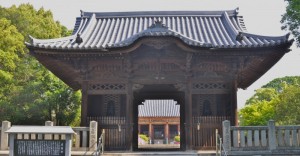 |
 |
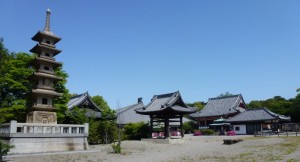 |
 |
 |
Nearby is a lookout point for the Seto Inland Sea and the Seto Ohashi Bridge which connects five islands with six sections of the bridge over the 9.4-km strait between the Kagawa Prefecture and the Okayama Prefecture. It was a misty morning and it was impossible to see the bridge. Nonetheless I had a great time shopping and talking with the shop-owner, a 76-year old lady who looks young and happy, and her brother and wife. She gave me a discount and I brought seven items for ¥12310! She even gave me a free ice-cream. By the time I started my journey downhill, it was 11:15am!
 |
 |
To reach Ichinomiyaji (Stop 83), I had to take the Nagao Line and the Kotoshira Line and a ten-minute walk. Unfortunately, the staff at the train station gave me wrong information. It was a hot day and I did not reach the temple till 12:45pm. I did not stay long and was back in Takamatsu around 2pm.
As it was too late to go to Negoroji (Stop 82), a lady at the tourist office suggested me visit the Kotohira-gu Shrine which honours the spiritual guardian of seafarers. I was on the Kotoshira Line again at 3pm. It was 4pm when I began my walk. The shrine reached by climbing 785 steps is impressive with many halls including two colleges. I went further and climbed another 500 steps to reach the Ikuno-in (Inner Sanctuary). It started to get dark when I boarded the train. I had a full day!
May 15 Wednesday: Stop 82-77
I began using my 5-day Shikoku Railway Pass (¥9700). But to reach Negoroji (Stop 82), I had to take a local bus and paid ¥450. The bus left at 7:55am and I got off at the road junction leading up to the temple. As the walk might take 90 minutes, I decided to take a taxi and paid ¥1300 for a 7-minute ride. This’s the best decision I made today.
 |
 |
 |
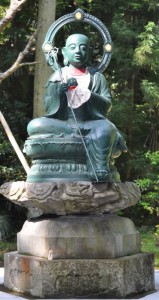 |
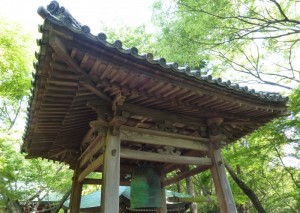 |
The temple is on a hillside. The main hall though small is atmospheric: it is fully enclosed with a beautiful inner courtyard and several red maple trees. The place was empty and I only met one pilgrim who kindly offered me a lift. Unfortunately, he was heading to Stop 83 while I was going to Stop 81.
I followed and enjoyed the 4.6-km trail to Shiromineji (Stop 81). The things I remember fondly about this temple are the soothing chanting music in the temple ground and the kind calligraphy writer for the nokyocho (stamp book) who gave me a bottle of water as I was thirsty and hot.
 |
 |
The best way to reach Kokubunji (Stop 80) is on foot (about 7km). The walk is mostly downhill. I reached the temple before 1pm. It has a copper bell made during the Nara period, the oldest one of its kind in Shikoku. The complex is fairly large including an area with the statutes of the main deities of all the 88 temples.
 |
 |
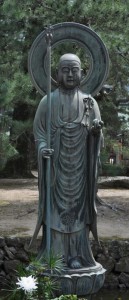 |
 |
After a leisure morning walk of over 10 kilometres, I enjoyed a short train ride to the Yasoba station. From there, it took me a few minutes to reach Tennoji (Stop 79) which is relatively small. I walked back to the station to take the 1:56pm train to the Utazu station.
 |
 |
My next stop is Goshoji (Stop 78), a small temple hidden away in a residential area. I took 20 minutes to reach it (1.2km), 15 minutes to look at it and 15 minutes to walk back to the train station!
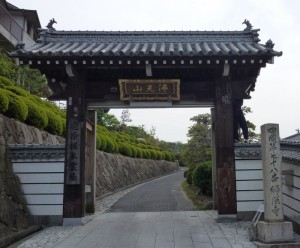 |
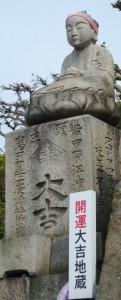 |
I took the 4:18pm train to the Tadotsu station and Doryuji (Stop 77) is 1km away. I arrived just in time to have my nokyocho stamped. The temple was empty and tranquil. I watched an old man closing the doors of the halls and sweeping the leaves and two young girls playing in the compound. Everything looks natural, peaceful and down to earth.
 |
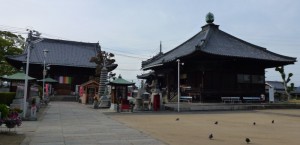 |
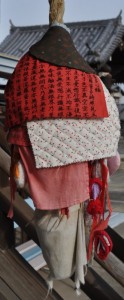 |
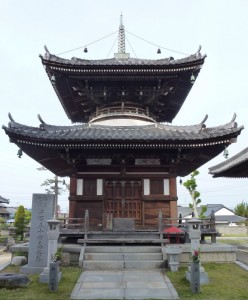 |
 |
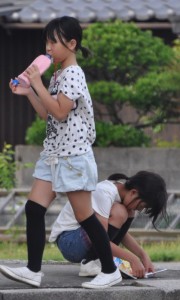 |
I took the 5:42pm train and arrived in Takamatsu 40 minutes later. An interesting and strenuous day!
May 16 Thursday: Stop 75-70
It’s time to leave Takamatsu and I decided to spend a night in the Kanonji city. I took my luggage and boarded the super express train at 7:20am. I arrived at the Zentsuji station at 8:01am. After storing my luggage (¥400), I found the local train to Konzoji (Stop 76) had gone and the next one would arrive 32 minutes later! I therefore decided to visit Zentsuji (Stop 75) first and return to Stop 76 at the end of the day.
Zentsuji was built by Kobo Daishi (774-835) upon return from China in 807 and named it after his father. This temple together with Mt. Koya and Toji Temple in Kyoto are the three holy sites linked to Kobo Daishi.
 |
 |
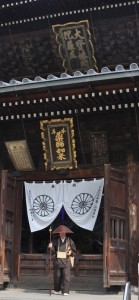 |
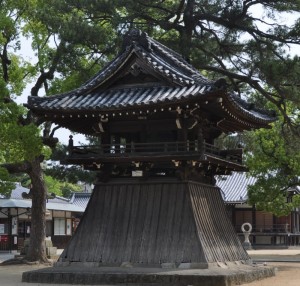 |
The compound covering an area of about 45,000 square metres is divided into Garan (Eastern temple) and Tanjoin (Western temple). In the Eastern temple, the key structures include the Kondo (Main Hall), a Five-storied Pagoda, two amazing 1100-year old camphor trees (okusu) which had been mentioned in Kobo Daishi’s writing captured and the two orange coloured Gosha Myojin. The Miedo (Daishi Hall) in the Western temple was built on the ruins of Kobo Daishi’s family house where he was born. I did not visit the museum as English captions are normally not available.
 |
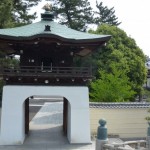 |
I walked to Koyamaji (Stop 74) (2km). Though it is not far, I was misdirected and spent some time in finding this small temple now located next to a quarry.
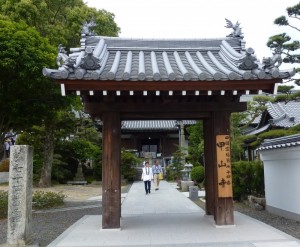 |
The next two temples are about 4km away and I found myself walking next to a main road with heavy traffic most of the time. I met the first foreigner who is a Dutch on this pilgrimage trail. He has been walking and camping for a month.
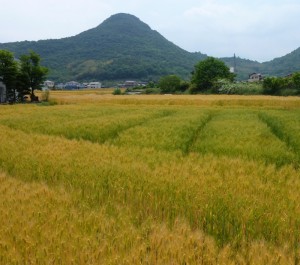 |
I first reached Mandaraji (Stop 72) which is relatively small.
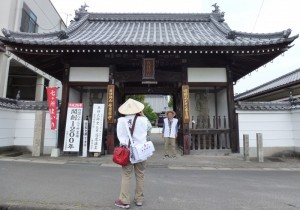 |
Shusshakaji (Stop 73) is located at a foothill. My urge to reach the top pushed me to take a 1.5-km long trail to the Okunoin. I only saw one person during this hour-long trek. It is here that Kobo Daishi took a vow to be a monk and to save people from suffering. Though I could read some characters, I could not comprehend the captions in Japanese which explain the significance of this site.
 |
 |
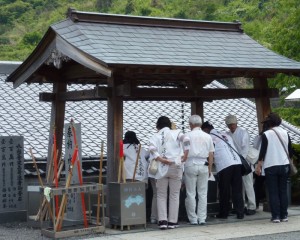 |
 |
 |
 |
 |
I was tired but still had to walk another 4km to reach Iyadaniji (Stop 71). It was hot and walking next to a busy highway was unpleasant. I had to walk uphill before reaching the temple. This temple is special as both the Main Hall and the Daishi Hall have been built into the rocks. Remarkable!
 |
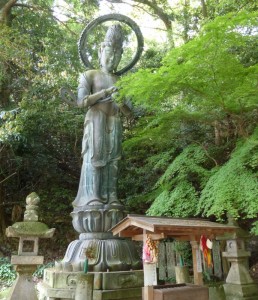 |
It was 3:30pm when I left the temple. I was exhausted and did not want to walk further. As there was no bus till 5pm, I went to a hotel next to the car park and asked a receptionist to call a taxi. I paid ¥1100 for a short ride to the nearest train station at Mino. The train heading to the Konzoji (Stop 76) had just left. Hence, I simply took the train going the opposite direction at 4pm in order to visit Motoyamaji (Stop 70). The temple was almost empty when I arrived. I had my nokyocho stamped before the temple closed at 5pm.
I returned to the Zentsuji station to pick up my luggage before taking a fast train to the Kanonji City. The train station is old and without lift or escalator. I had great difficulties in carrying my suitcase though it was less than 15kg. There were many high school students who are tall and strong. But none offered assistance till a student uniform helped me to carry my suitcase for two seconds (as I reached the bottom of the staircase by then).
I went to three hotels near the station but they were all full. All the staff was unhelpful and did not even give me a local map or suggest where I might find a room. It was dark and chilly. As I had studied a map on the temples, I vaguely know the layout of the city. I walked along the main road and found a sushi shop. I went in and asked for advice on local inns. A young waiter accompanied me to a guest house 50m away. I appreciate his help.
The guest house with ten rooms is run by Junko who is one year older than me. She has studied Chinese at university and can speak some Chinese. She can also play er’hu, a Chinese musical instrument difficult to master. I ran into the second Dutchman, Wim who had been walking for a month. He has lost 10kg so far and looks very fit! He told me about his experience and reminded me to go to see Castle and Stop 51 when I reached Matsuyama Castle.
May 17 Friday: Stop 69-66 and 76
I did not sleep well and left the guest house before 6:30am. Kanonji (Stop 69) and Jinnein (Stop 68) are located in the same vicinity across the river. I took less than 10 minutes to reach the temples. Kanonji’s halls are in orange colour while the Jinnein’s Main Hall is modern (this is the first one with modern design that I have seen).
 |
Junko prepared a hot breakfast with fish and rice for me. I sought her advice on how to go to Daikoji and Unpenji. She said there is no public transportation and offered to take me there. It turns out that she was born near Daikoji and has been running the guesthouse established by her mother for 40 years. She goes every day to her mother’s house to look after two cats and plants as her mother is living in a home for the elderly. She left me in the temple for an hour while working in her mother’s house.
Daikoji (Stop 67) surrounded by hills and farmland has a 1000- year- old pine tree planted by Kobo Daishi.
|
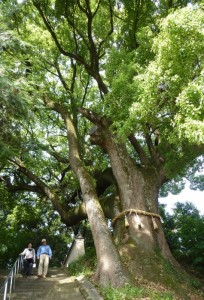 |
Junko picked me up at 9:50am and drove me to the ropeway station for Unpenji (Stop 66) (about 15km). I decided to take the cable car as it would take over two hours to walk up. Wim has also warned me about the steep slopes and I consider it too strenuous for me and my knee. I paid ¥2000 for a return ticket and arrived at the top before 10:30am. The views at almost 1000m above sea level are fine (though it was not too clear). I however do not find the new temple complex too interesting. There is a statute at the hilltop behind the temple complex (thus making the summit at 1000m). I took the cable car back to the station at 11am.
 |
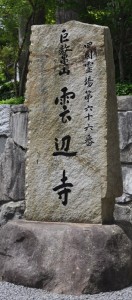 |
The next question was how to get to the Kanonji station. Junko had offered to pick me up. I did not want to bother her. When I spotted a taxi waiting in the car park and a lady in the same cable car walking towards it, I asked through a Canadian girl who speaks Japanese, whether I could share her taxi. She had no objection and I jumped with joy. The lady was heading to Daikoji (Stop 67).The driver dropped me at a convenient store and told me to wait. He returned after dropping the lady off. I paid ¥1600 for my ride to the train station.
Things worked out much better for my last attempt to visit Konzoji (Stop 76). While on the train, I also decided to end my pilgrimage trip upon completion of the 4th stage of Shikoku pilgrimage (Stop 66-88). I should leave the 2nd and 3rd stage to a later date. The temple is close to the train station and is fairly grand with stone foundation of former structures and many old trees.
 |
 |
 |
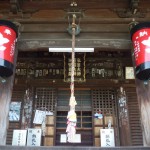 |
 |





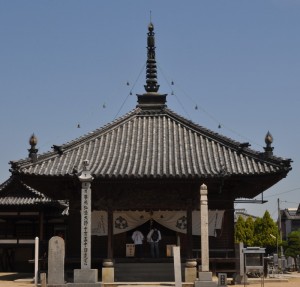


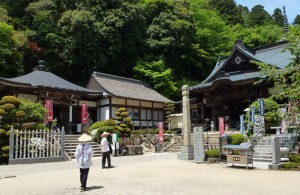






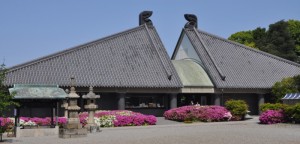
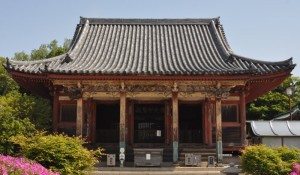


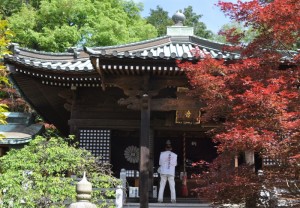
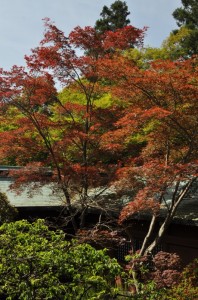
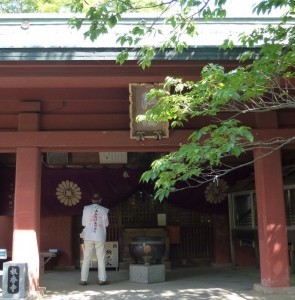
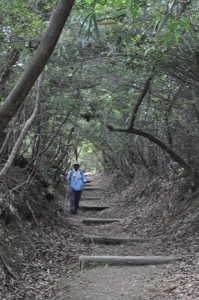












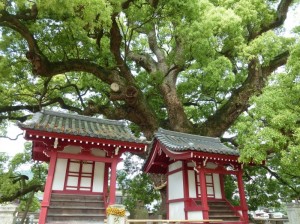



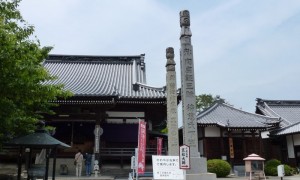

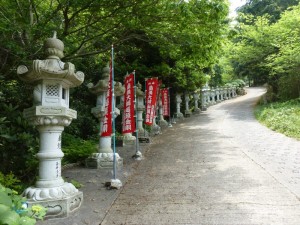
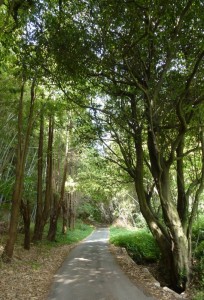




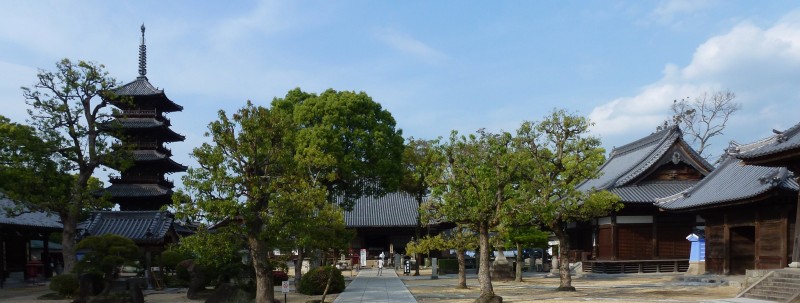
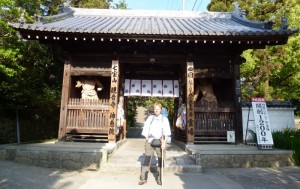




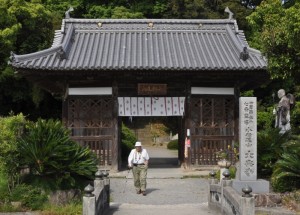

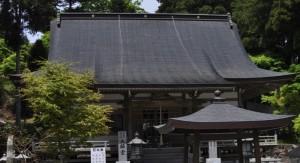
hope you will return to KANONJI again